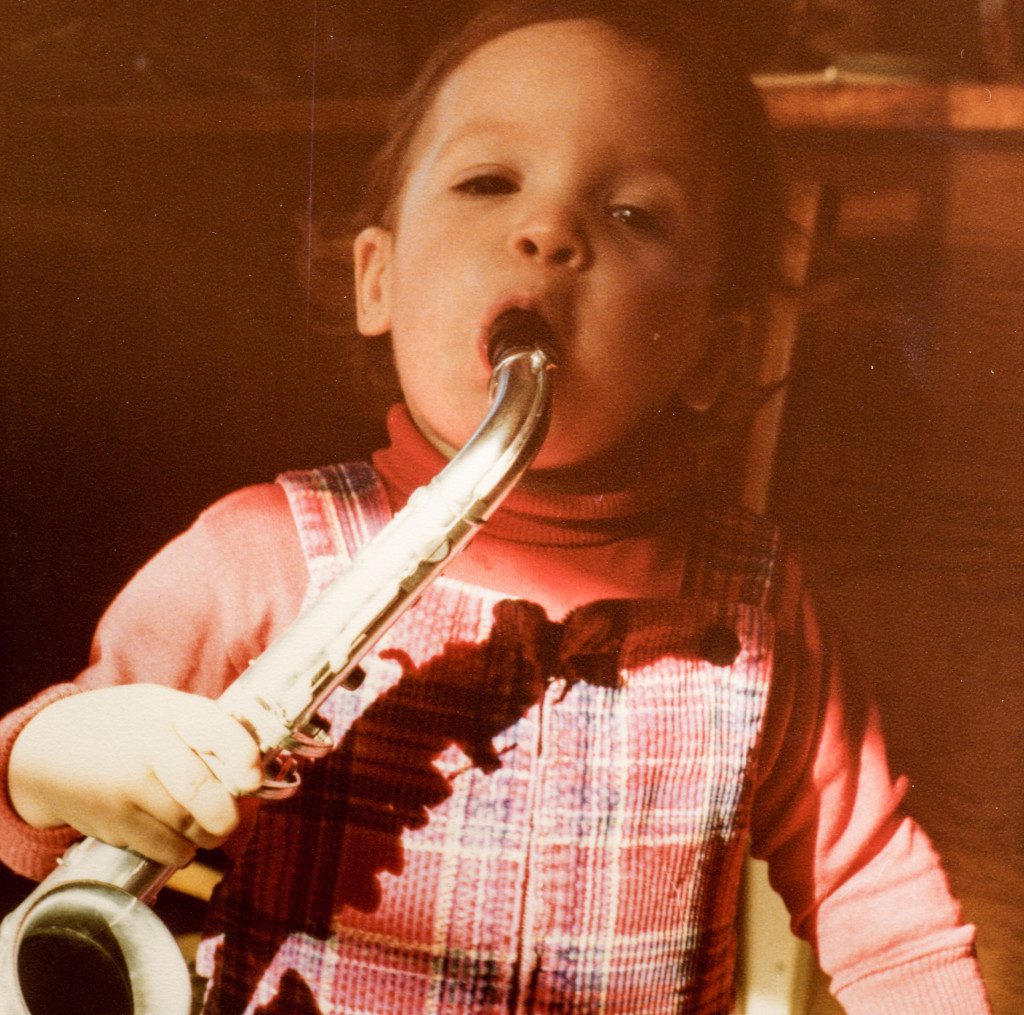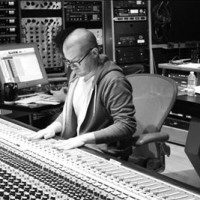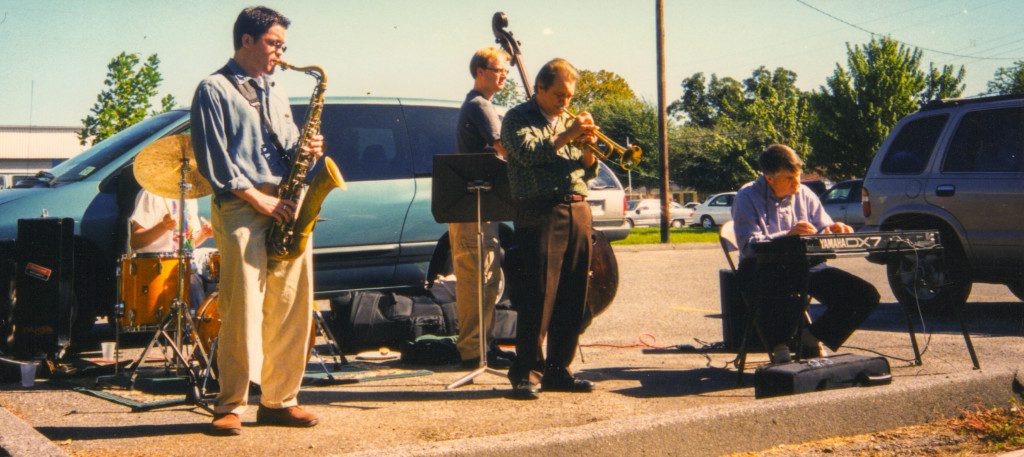Welcome back to Sound & Vision, the Rumpus profile series that spotlights the creative talents of those working behind the scenes in the music industry. In this installment, I’m talking with the GRAMMY-nominated mixer, engineer, producer, and musician Dana Nielsen. As legendary producer Rick Rubin’s long-time collaborator, Nielsen has worked on many chart-topping albums including Black Sabbath’s 13, Neil Diamond’s Home Before Dark, and Adele’s 21. He’s also lent his skills to albums by stylistically diverse artists including Kanye West, Bob Dylan, Rhianna, Weezer, and Slayer. Though Nielsen has been most active in the studio making albums for other musicians, he’s recently started an exciting new musical collaboration with the hip-hop artist Crown and the M.O.B. (Message of the Blues). Not only did Nielsen co-produce, engineer, and mix Crown and the M.O.B.’s debut album, All Rise, released this summer, but he also co-wrote many of the songs, and sings and plays on the record and in the band’s live shows.
***
The Rumpus: I understand you got your start as a jazz musician. Can you tell me more about your background?
Dana Nielsen: I’ve always been a musician, and my parents are also both musicians, as is my younger brother. My parents’ friends would also play at our house and I grew up around all of them playing jam sessions. I studied piano initially as a Suzuki student when I was about three. Suzuki is all ear training-based (no reading music) so it was an easy start for me. From there I started studying saxophone at about age nine and then that became my main thing.
Rumpus: Did you know as a kid that you would pursue a professional career as a musician?
 Nielsen: Even though I played music throughout school I was also really into math and the sciences and I really wanted to go to the Illinois Mathematics and Science Academy in Aurora, Illinois. (Laughs) I wasn’t necessarily talented in those areas but that was where my heart was. Later in high school I was still serious about music… and I was getting a C in physics. I thought maybe I should look at the music stuff a little more seriously in terms of college and career. I visited a number of schools and I chose the jazz program at Loyola in New Orleans. I got there around midnight on a weekday and it was case closed. I just fell in love with the place really. There was music everywhere—in bars and restaurants, and even in the street. Even though it’s not a big city, New Orleans is chock full of incredibly talented musicians.
Nielsen: Even though I played music throughout school I was also really into math and the sciences and I really wanted to go to the Illinois Mathematics and Science Academy in Aurora, Illinois. (Laughs) I wasn’t necessarily talented in those areas but that was where my heart was. Later in high school I was still serious about music… and I was getting a C in physics. I thought maybe I should look at the music stuff a little more seriously in terms of college and career. I visited a number of schools and I chose the jazz program at Loyola in New Orleans. I got there around midnight on a weekday and it was case closed. I just fell in love with the place really. There was music everywhere—in bars and restaurants, and even in the street. Even though it’s not a big city, New Orleans is chock full of incredibly talented musicians.
Rumpus: Tell me more about your experiences in college.
Nielsen: I was around so many talented players and I got to play saxophone live all the time and make a living at music while I was still a student. When I was in my senior year I also had the chance to take some electives and I went for some studio classes including introduction to recording music and electronic music, which were taught by a man named Sanford Hinderlie. I realized quickly that if I got involved with the production side, I could listen to music—all kinds of music—all day, whether mine or other’s, and maintain creative involvement. I became a teaching assistant and got my own keys to the studio. I’d stay up all night working on projects. The first real one I did was a hip-hop compilation on a start-up label called Renaissance Records. I got addicted to working in the studio right away.
Listen to one of Dana’s early projects, a hip-hop compilation for Renaissance Records (iPad/iPhone users, click here):
[soundcloud url=”https://api.soundcloud.com/tracks/202936133″ params=”color=ff5500&auto_play=false&hide_related=false&show_comments=true&show_user=true&show_reposts=false” width=”100%” height=”166″ iframe=”true” /]
Rumpus: You went on to master several roles on the production side. For folks who may not be familiar with the distinctions, can you briefly describe each of the roles involved in making a record?
Nielsen: Sure. Maybe at first the band, producer, and engineer meet to discuss the vision for an album, like what kinds of sounds they like, what are their artistic influences, where they’ll record, etc. Maybe you want it to sound natural and open and ambient. Or maybe you want it to sound really poppy or shiny, etc. With recording, you’re doing the technical work like selecting and placing microphones and recording the band with as many takes as needed to achieve that desired sound. From there, the mixer uses his or her ear and technical skills to take the individually recorded tracks and blend them together into a stereo mix, and then a mastering engineer puts on the finishing touches to ensure that everything is right sonically and tonally across all of the songs on the album. There are so many different styles of working on a record, sometimes with people playing multiple roles in the process, but overall it’s about collaborating to create the right environment in order to achieve the vision for a song or an album.
Listen to Dana’s songwriting demo for the Crown and the M.O.B. song “High For You,” intercut with the finished, mastered track. Dana sings the chorus on the finished track along with Danny Dunlap, who sang the demo. He also did the drum programming and wrote some of the lyrics (iPad/iPhone users click here):
[soundcloud url=”https://api.soundcloud.com/tracks/202934775″ params=”color=ff5500&auto_play=false&hide_related=false&show_comments=true&show_user=true&show_reposts=false” width=”100%” height=”166″ iframe=”true” /]
Rumpus: After working with hip-hop artists in New Orleans, did you transition to other styles when you came to LA?
Nielsen: I’ve always loved working with a lot of different styles—in the beginning it wasn’t just hip-hop but I also did a lot of jazz, singer/songwriter stuff, et cetera. I still work with a lot of styles, which keeps me fresh. When I came out to LA, which was in 2000, my first major project was recording a live tour for Colin Hay of Men At Work. I met Colin while I was doing some technical consulting for Westlake Audio and I went out there to help him install studio stuff. We kept in touch and he would ask me from time to time about gear, and then he said he was going on this tour and asked me about what kind of mixer to get. So I gave him advice and said, “Hey, you should bring me along and I’ll record it for you.” At first he laughed, but then he called me back in a day or two and asked if I was serious. I was like, “Of course!” It was a blast. This was a six-week tour with maybe thirty cities. You know, with live recording you don’t have the controlled acoustics that you have in a studio, but you do have the same equipment from place to place and you have a sense of how to place it. The challenge of live recording was part of the fun! The tour was great and Colin is amazing. He and I are still good friends today. As for other experiences with live recording, I just got back from Montana where I recorded seven musicians in a small living room. It wasn’t recorded in front of an audience, but it’s still about figuring out how to get the best sound you can from the space.
Rumpus: How and when did you connect with Rick Rubin?
Nielsen: I think it was about 2003, through an introduction by a phenomenal engineer: John Hanlon. As with Colin, I met John when I was a technical consultant for equipment. John’s an old school guy with tapes and tubes and I was kind of teaching him new digital techniques like Pro Tools while he taught me the older analog stuff. I was always ribbing him for opportunities to get involved with projects he was working on. At the time, aside from one-off projects, I was running my own production company out of my house, and I had a small commercial studio for a while, but as an engineer I was still trying to get my foot in the door by assisting bigger, better engineers who were working with prominent artists. John was working on a live Jayhawks album with Rick. I begged him to let me help but at first he said he couldn’t because it was at Rick’s house and it was very private, and Rick already had a guy. But was luck would have it, that guy couldn’t make it and John called asking me to lend a hand. Of course I was jumping up and down!
That was a short project—maybe four or five days—but Rick’s production coordinator put the feelers out to see if I could lend a hand on some other projects. I called a few times after that to follow up, but I kind of gave up when I didn’t get gigs. A friend of mine who’d worked with Rick explained just how busy things are in Rick’s world. He told me not to take it personally and urged me to give her another call. Thankfully I took his advice! I called once more and got a call back like a day later to assist Greg Fidelman on engineering Neil Diamond’s 12 Songs. A year and change after that, I also got to mix the “artist’s cut” of that album. It was a mind-blowing project. I then got to mix Neil’s follow up album Home Before Dark for Rick. Working with Rick is like going to school, an amazing learning experience every day, and a real treat.
Watch a video for the song “Men Are So Easy” which Dana mixed for the artist’s cut of Neil Diamond’s 12 Songs:
Rumpus: Maybe because it’s become less expensive, and the technology has become more accessible, a lot of artists are taking a DIY approach to recording. Do you ever find artists come to you thinking they know what they’re doing maybe a little more than they actually do? Or do folks with a little more studio experience under their belts tend to leave the recording to the pros?
Nielsen: Some people are talented as artists and also have studio chops. Most of the people I work with know how to write a song and arrange a track, and how to put everything together really well. That’s what gets them to some place like Rick’s door and then he takes it to a whole other level. One of my favorite parts of my job is getting to listen to demos, especially from really established artists, to see where their starting point is. For example [the late] Jeff Hanneman of Slayer would have everything fleshed out and awesome. The Linkin Park guys are also really adept. Damien Rice is really savvy too, having recorded all over the world.
I also just finished recording and mixing a new duo out of England produced by Rick called Ruen Brothers, who are quite young and technically savvy. Their demos were made on a laptop in their bedroom studio and they were very cool and inspiring. The portability and affordability of recording equipment has gotten more people involved than in decades prior. If I hear something someone has done and it’s fantastic, but maybe has some holes here or there, or isn’t in the ideal tempo, or in the best key for the singer, etc., I like being able to offer a fresh perspective and help them make the song or album the best realization of their vision.
Rumpus: Maybe that’s where it helps to have both the technical know-how and the background as a musician.
Nielsen: Sure. Being a musician helps me bridge the gap between the technical and the creative. It helps me to figure out in musical terms what’s needed and how to best convey that to an artist whether I write it out as sheet music or just communicate it verbally. These days I record and mix a lot more than I play saxophone but it’s still helpful and fun to be able to call on that experience and be able to talk to musicians as a musician.
Rumpus: That’s also something you’ve recently brought to your involvement with the hip-hop artist Crown and the M.O.B. There you’ve not only been on the engineering side of the project but I understand you also co-wrote some of the songs, sing, and play several instruments on both the album and in the live shows.
Nielsen: Yes. The M.O.B. (Message of the Blues) crew has recorded all kinds of music and played together a lot and we’re all good friends. Crown was a friend of the M.O. B. bassist Colin Wolfe, and we just started writing songs and it all came together.
Watch Dana perform the song “Turnaround” live with Crown and the M.O.B.:
Rumpus: This is quite a novel collaboration. It’s got an eclectic musical style, and an East and West Coast vibe. You and the M.O.B. also perform with Crown as a ten-piece band, which is rare for hip-hop. What’s it like to bring all of these parts of your musical life together?
Nielsen: We’re playing a lot these days in LA—just because it’s easier for us to play together locally than it is to travel. When we perform live it’s slightly different than the album since we’re not doing any programmed beats onstage. It’s all live, and there’s even banjo and guitar, percussion and horn sections, and sometimes a DJ scratches, and so on. It’s one big, fun party and people have been receptive to us, which is really exciting!
***
You can see Crown and the M.O.B. play live! Click here for upcoming shows.
***
Feature photograph of Dana Nielsen recording an 18-piece big band plus choir at legendary East West Studio 1 © Charissa Nielsen. All images are courtesy of Dana Nielsen.
***
This interview has been edited and condensed. If you’d like to recommend someone for “Sound & Vision,” drop Allyson a line here.





